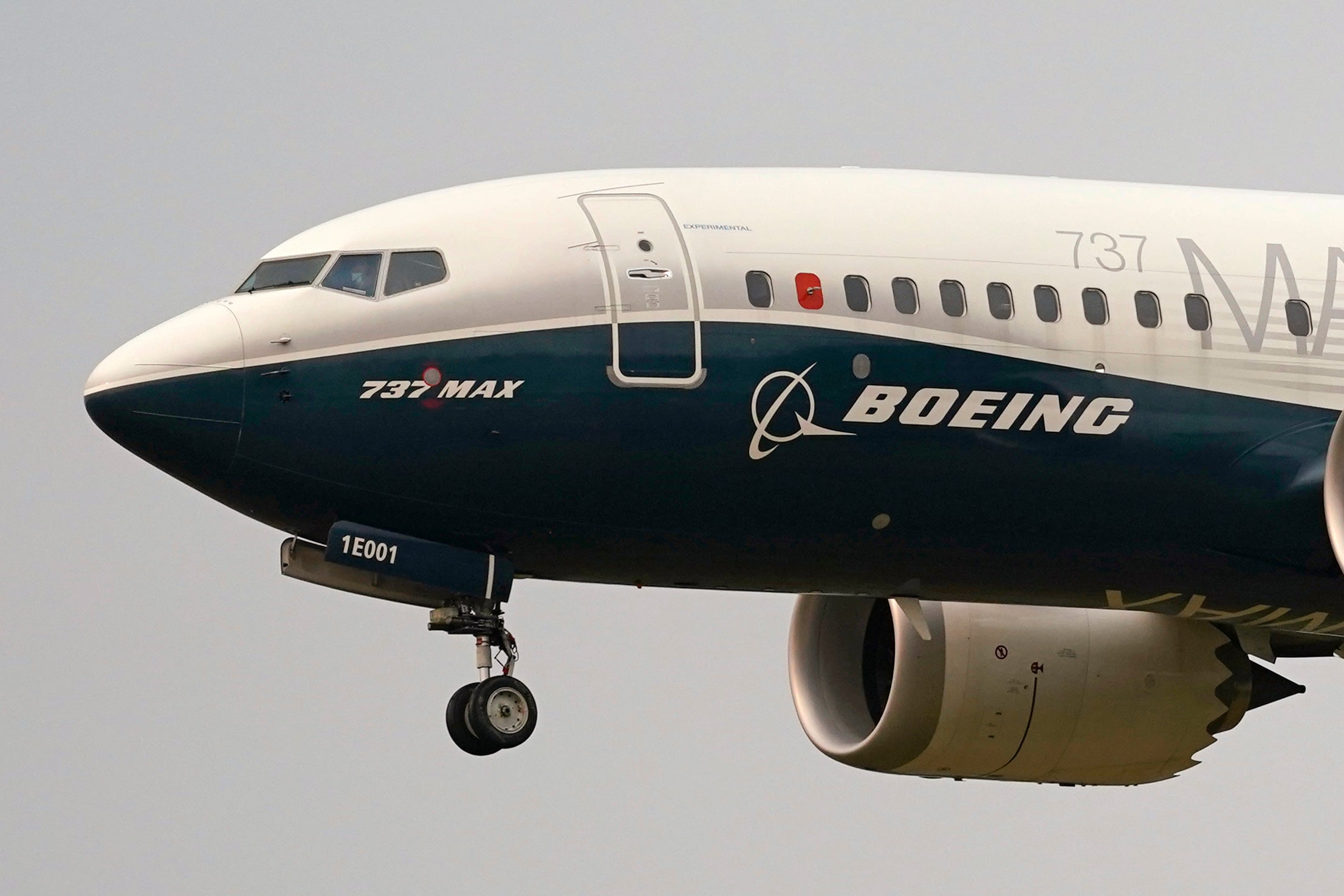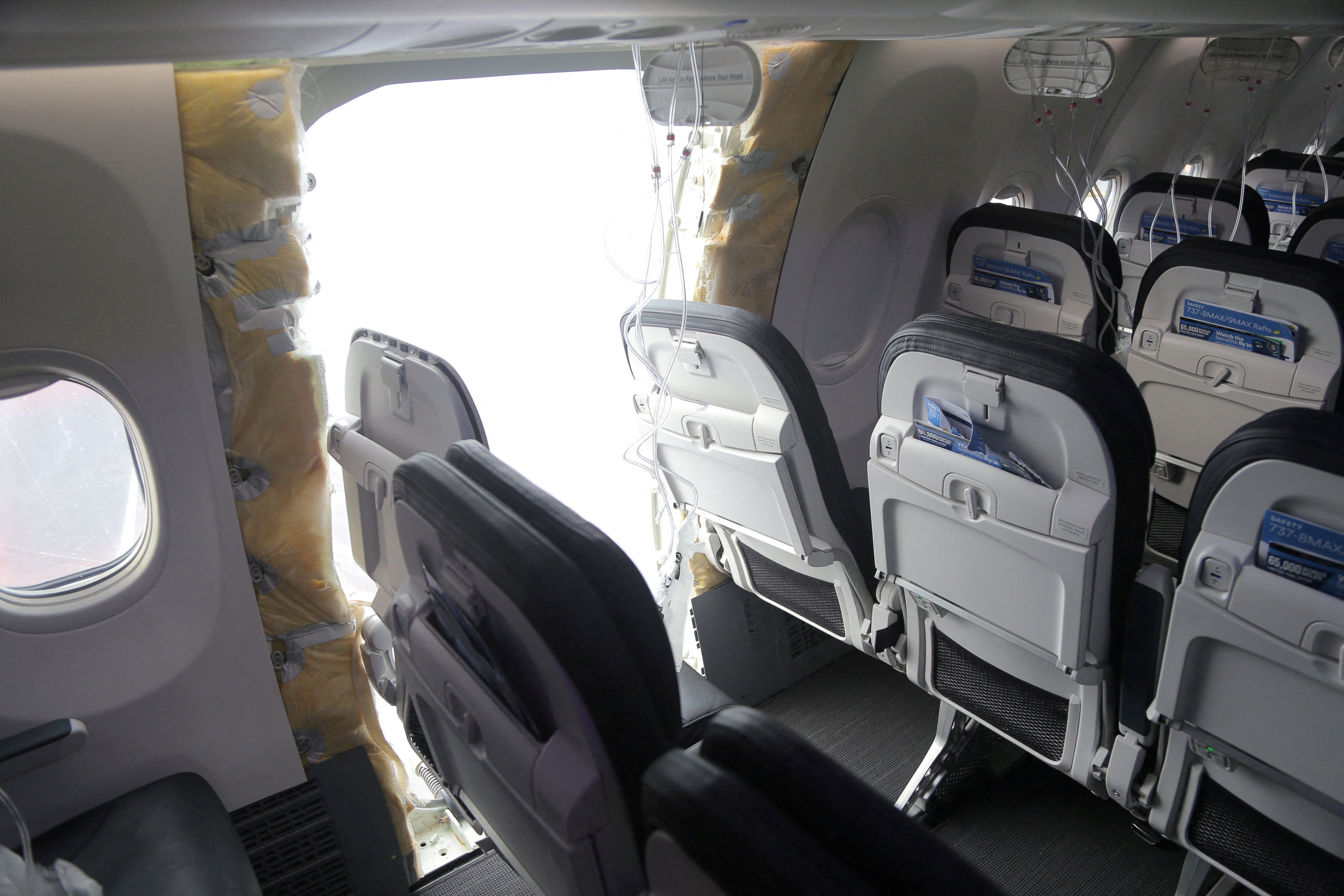John Barnett: What were the Boeing whistleblower’s allegations about the airline?
John Barnett, 62, had been giving evidence against his former employer Boeing in recent days
Your support helps us to tell the story
From reproductive rights to climate change to Big Tech, The Independent is on the ground when the story is developing. Whether it's investigating the financials of Elon Musk's pro-Trump PAC or producing our latest documentary, 'The A Word', which shines a light on the American women fighting for reproductive rights, we know how important it is to parse out the facts from the messaging.
At such a critical moment in US history, we need reporters on the ground. Your donation allows us to keep sending journalists to speak to both sides of the story.
The Independent is trusted by Americans across the entire political spectrum. And unlike many other quality news outlets, we choose not to lock Americans out of our reporting and analysis with paywalls. We believe quality journalism should be available to everyone, paid for by those who can afford it.
Your support makes all the difference.A Boeing whistleblower who raised concerns over the firm’s production standards has been found dead aged 62 in South Carolina.
Local authorities confirmed that they found former Boeing employee Mr Barnett dead in his truck in a hotel car park over the weekend.
Police said it appears he suffered a “self-inflicted” gunshot wound and are investigating further.
Mr Barnett had been giving evidence in a lawsuit against Boeing in recent days, having first blown the whistle on alleged aircraft safety issues in 2019.
Boeing has responded to Mr Barnett’s death, saying: “We are saddened by Mr Barnett’s passing, and our thoughts are with his family and friends.”
Who is John Barnett and what were his Boeing accusations?
Mr Barnett worked at Boeing for over three decades, retiring in 2017 after 32 years with the company.
From 2010, he worked as a quality manager at their North Charleston plant in South Carolina, where he worked on the 787 Dreamliner long-haul passenger aircraft.
Since retiring, Mr Barnett was engaged in legal action against his former employer for disparaging his character and hampering his career after being forced to retire for raising issues about the company.
Boeing denies this, claiming that Mr Barnett’s retirement plans were long-standing, and that they had “in no way negatively impacted Mr Barnett’s ability to continue in whatever chosen profession he so wishes”.

The qualified aerospace engineer had been giving evidence in a lawsuit related to this case in recent days and was due to return for questioning on Saturday 9 March.
Enquiries were made at his hotel when he did not arrive, which is when his body was found.
In 2019, Mr Barnett shared concerns about his former employer with the BBC, alleging issues with the oxygen system on board the 787 Dreamliner.
The qualified aerospace engineer raised concerns that passengers on board the aircraft could be left without oxygen in case of sudden cabin decompression.
After finding some oxygen bottles were not discharging, Mr Barnett commissioned a test of 300 brand new oxygen systems. He claimed 75 of them – a quarter – did not deploy properly.
He claimed that Boeing had blocked him from looking into the matter further. He then went to the Federal Aviation Authority (FAA) to complain, but they were unable to substantiate the claim as Boeing had informed them it was working to resolve the issue at the time.
The aircraft manufacturer rejects Mr Barnett’s allegations, issuing clarification in 2017: “[Boeing] identified some oxygen bottles received from the supplier that were not deploying properly. We removed those bottles from production so that no defective bottles were placed on airplanes, and we addressed the matter with our supplier.
“Every passenger oxygen system installed on our airplanes is tested multiple times before delivery to ensure it is functioning properly, and must pass those tests to remain on the airplane.”
Mr Barnett also alleged that Boeing failed to follow tracking procedures at its South Carolina plant, as defective items were allowed to be “lost”.
He said that workers had deliberately been fitting sub-standard parts from scrap bins on the production line, claiming that “Boeing South Carolina is strictly driven by schedule and cost”.
A 2017 review by the FAA upheld Mr Barnett’s complaint, finding that the location of 53 ‘non-conforming’ parts was unknown, and ordering Boeing to take action on the issue.
Boeing responded to the report saying it had “fully resolved the FAA’s findings with regard to part traceability, and implemented corrective actions to prevent recurrence”.
In 2024, Mr Barnett joined other employees in speaking out against the 737 MAX aircraft, which has been subject to several mid-air technical emergencies in recent years.
“In my opinion, Boeing needs a reckoning from the top down,” he said. “This is a Boeing issue, this is not a 737 issue”.
When did Boeing’s legal issues begin?
In 2018 and 2019, two separate Boeing 737 MAX crashed, killing a combined 346 passengers with no survivors. In response, the airline model was grounded around the world – a total of 387 planes.
Investigations were subsequently made by both the Federal Aviation Administration (FAA) and US House of Representatives in 2020.
The following year, the Department of Justice (DoJ) found Boeing had conspired to defraud the FAA during their investigation, meaning they had attempted to ‘cover up’ their failures and not engaged with the federal government agency honestly.
This is a criminal offence in the US, carrying the charge of ‘conspiracy to defraud the US’. Entering a ‘deferred prosecution agreement’ with the DoJ, Boeing was criminally charged and made to pay over $2.5bn.
The payment comprised a criminal fine of $243.6m, compensation payments of $1.77bn and a $500m fund to compensate the relatives of the 737 MAX crash victims.
A spokesperson for the Criminal Justice Department said: “Boeing’s employees chose the path of profit over candor by concealing material information from the FAA concerning the operation of its 737 Max airplane and engaging in an effort to cover up their deception.”
“This resolution holds Boeing accountable for its employees’ criminal misconduct, addresses the financial impact to Boeing’s airline customers, and hopefully provides some measure of compensation to the crash-victims’ families and beneficiaries.”
The agreement sees the criminal charge dropped after three years if Boeing complies with all its conditions.

On 5 January 2024, a door plug blowout occurred on board Alaska Airlines Flight 1282 at 16,000 feet. Several passengers were injured as the aircraft made an emergency landing with a door-sized hole in the body of the 737 MAX 9 jetliner.
The FAA said in January that it was increasing its scrutiny of Boeing, while the Justice Department opened a criminal investigation into the Alaska Airlines blowout in March.



Join our commenting forum
Join thought-provoking conversations, follow other Independent readers and see their replies
Comments